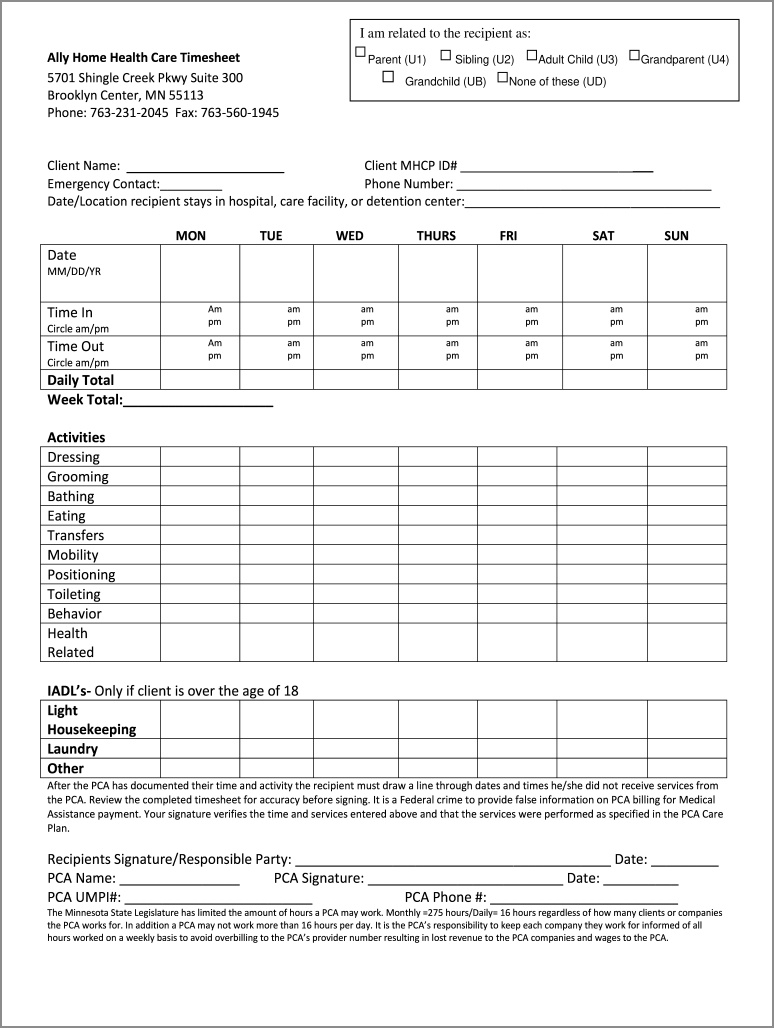In the world of home health care, keeping track of the hours worked by caregivers is crucial. One effective way to do this is by using a home health care timesheet. This article will explore the importance of using a timesheet in the home healthcare industry and how it can benefit both caregivers and clients.
Home healthcare providers face unique challenges when it comes to managing their workforce. Caregivers often work irregular hours and may be assigned to multiple clients in different locations. Without an efficient system in place to track hours worked, it can be difficult to ensure accurate payroll and billing, as well as maintain compliance with labor laws and regulations.
What is a Home Health Care Timesheet?
A home health care timesheet is a tool that allows caregivers to record their hours worked on a daily or weekly basis. It typically includes fields for the caregiver’s name, date, start and end times, and any breaks taken. Some timesheets may also include additional fields for mileage or expenses incurred during the shift.
A timesheet can be paper-based or electronic, depending on the preferences and resources of the home health care agency. Electronic timesheets offer the advantage of automated calculations and easy access to data, while paper-based timesheets may be more suitable for agencies with limited technology infrastructure.
Why Should Home Health Care Agencies Use Timesheets?
There are several reasons why home health care agencies should consider implementing the use of timesheets:
- Accurate Payroll: Timesheets provide an accurate record of the hours worked by caregivers, making it easier to calculate payroll accurately and ensure that caregivers are paid correctly and on time.
- Billing and Invoicing: Timesheets can be used as supporting documentation for billing and invoicing clients or insurance companies. They provide a clear record of the services provided and the hours worked.
- Compliance with Labor Laws: By using timesheets, home health care agencies can demonstrate compliance with labor laws and regulations. This is especially important when it comes to overtime pay and tracking hours worked for caregivers who are exempt from certain labor laws.
- Efficient Scheduling: Timesheets can help agencies optimize their scheduling processes by providing insights into caregiver availability and workload. This can help ensure that clients are assigned the appropriate caregiver based on their needs and preferences.
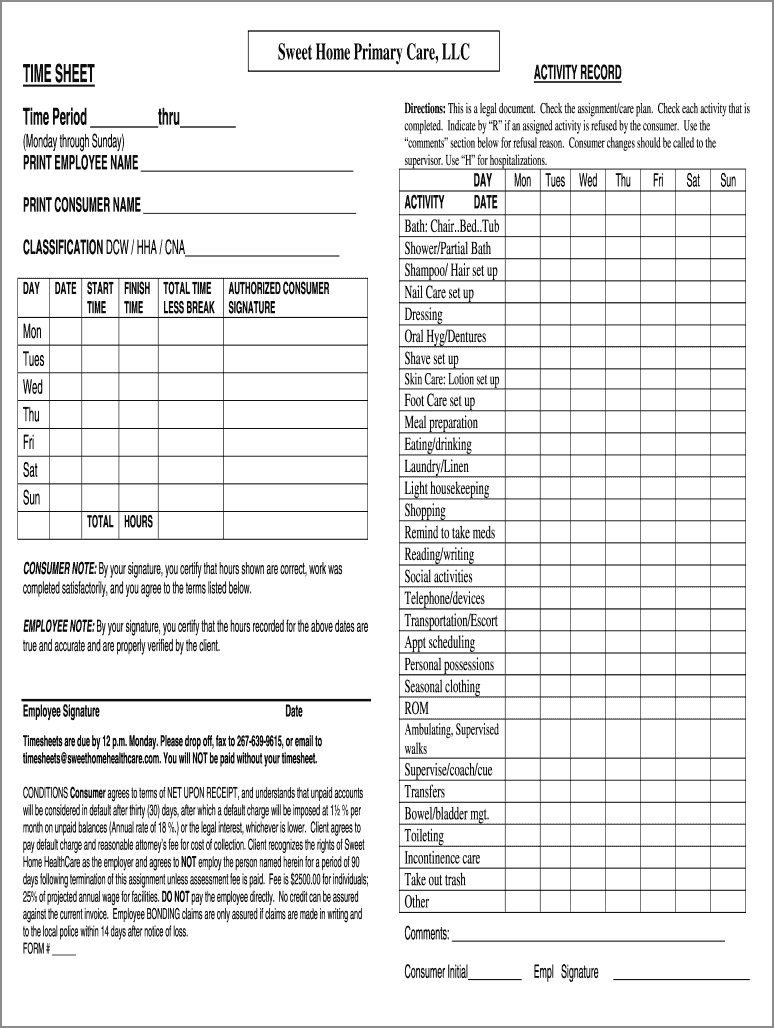
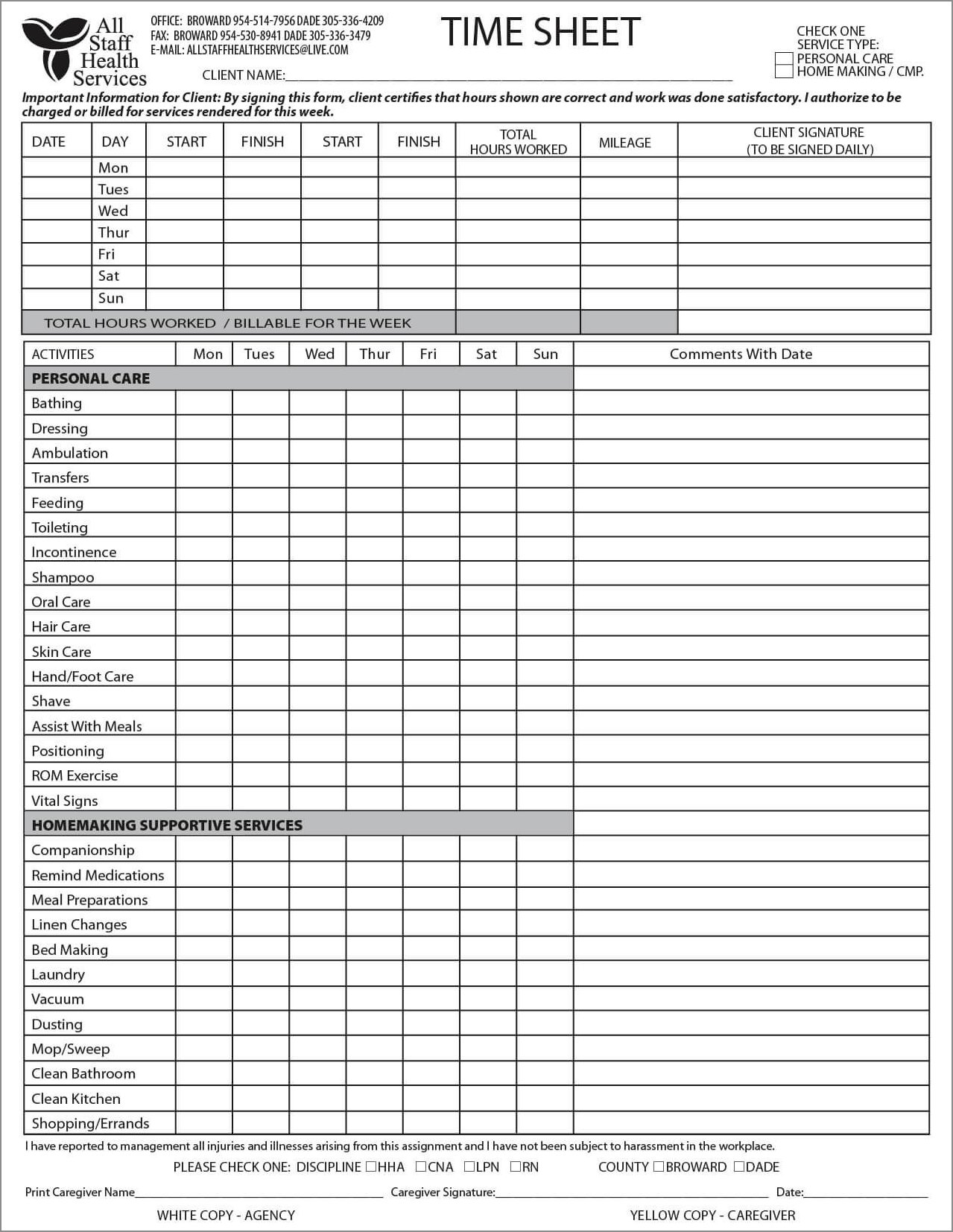
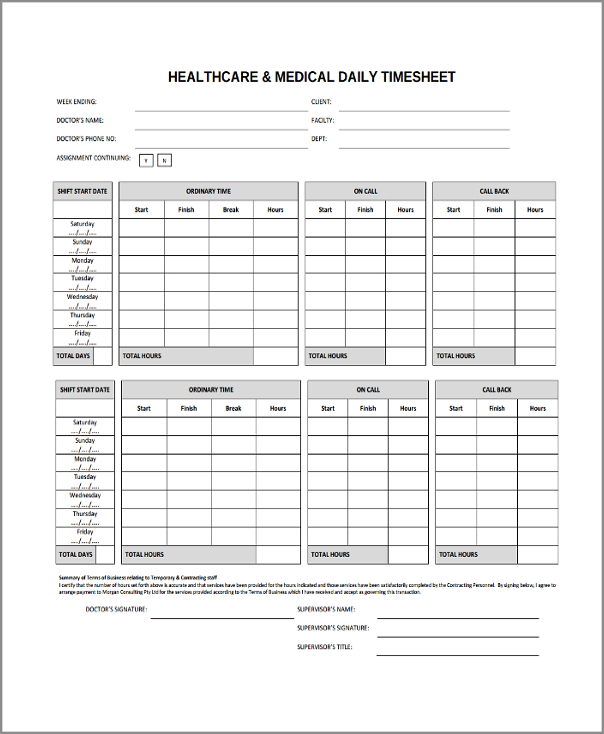
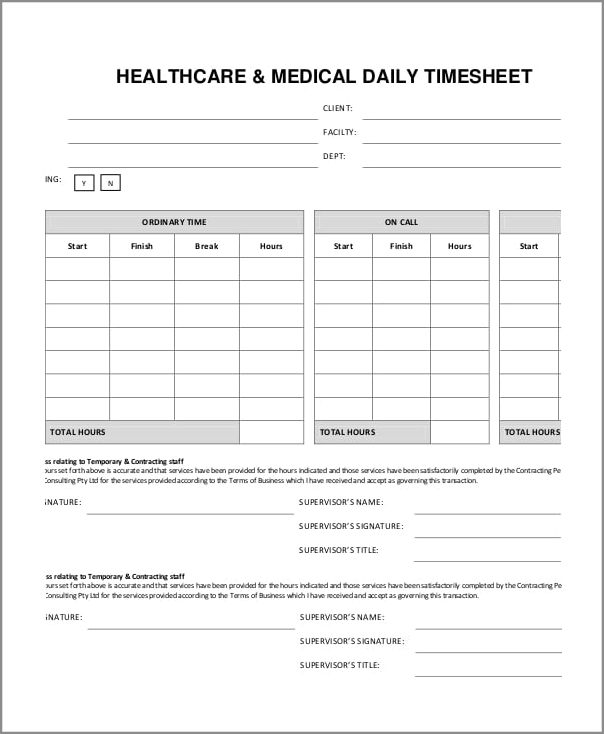
How to Use a Home Health Care Timesheet
Using a home health care timesheet is a straightforward process. Caregivers simply need to record their start and end times for each shift, as well as any breaks taken. It is important to be as accurate as possible when filling out the timesheet to ensure that caregivers are paid correctly and that billing is accurate.
Timesheets should be submitted to the agency regularly, either at the end of each shift or at the end of the week. This allows the agency to process payroll and billing promptly. It is also a good idea to keep a copy of the timesheets for record-keeping purposes.
By using a home health care timesheet, agencies can streamline their operations, ensure accurate payroll and billing, and maintain compliance with labor laws. Caregivers can also benefit from the use of timesheets by having a clear record of their hours worked and ensuring that they are paid correctly. Overall, the use of a timesheet is an essential tool for home health care agencies and caregivers alike.
Home Health Care Timesheet Template – Download
